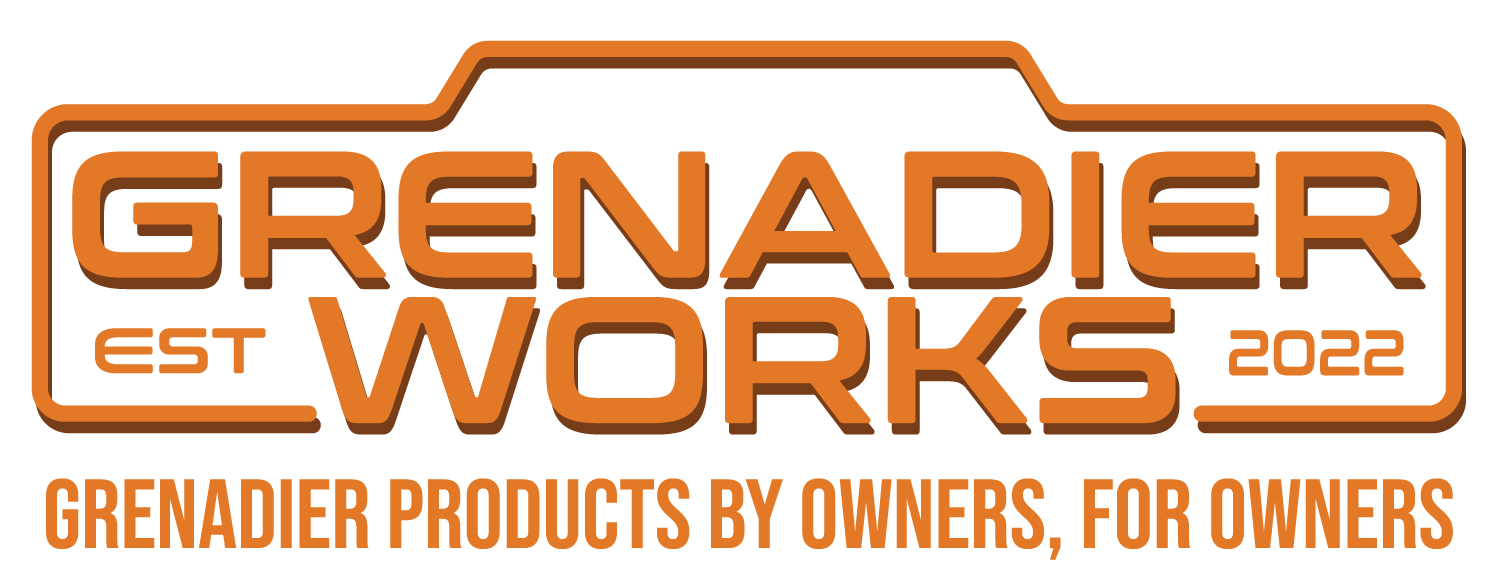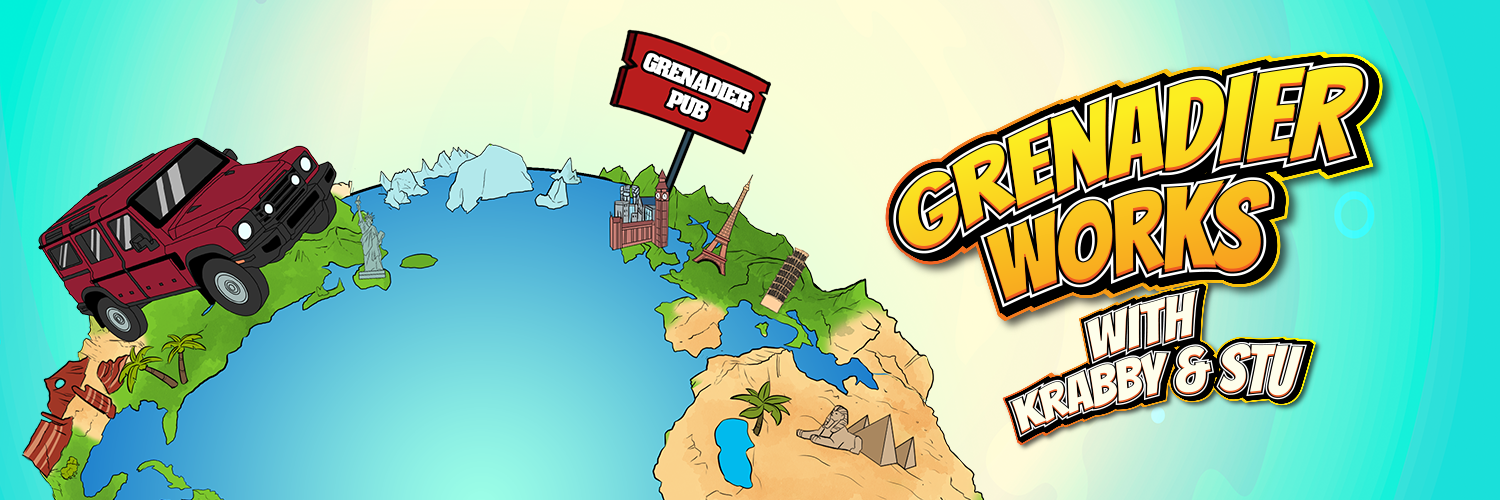Is the failure of the boot and the failure of the circlip two separate issues that can occur independently or does one relate to the other? Do both have the same root cause being excessive angle putting stress on the components or is something else causing the circlip failure?
The Grenadier Forum
Register a free account today to become a member! Once signed in, you'll be able to contribute to the community by adding your own topics, posts, and connect with other members through your own private inbox! INEOS Agents, Dealers or Commercial vendors please use the contact us link at the bottom of the page.
You are using an out of date browser. It may not display this or other websites correctly.
You should upgrade or use an alternative browser.
You should upgrade or use an alternative browser.
It seems like every manufacturer with a new platform or powetrain combination is having major issues at the moment. Ford and GM with transmissions (Allison has anounced it's removal of any brand association with any current GM transmission), GMs new V8, Toyota V6 petrol, every one who makes a wet belt engine, Ford V6 diesel in the Ranger, both Ranger and Lc300 with drive shaft vibrations and the list goes on. Has cost cutting in engineering and production plus the introduction of more and more tech, higher employee wages from the traditional manufacturers plus trying to keep competitive with the tofu-dreg cars finally caught up an now high priced sub-par products are becoming the norm.This seems a lot like Toyotas tap dance around years worth of badly engineered engines, claiming it was debris from machining and not engineering. They accidentally confessed in a NITSA document the other day as they added another 126K engines to the recall list. that the engines do indeed have engineering flaws. Here is a little secret....I replaced my factory one with a Terra Flex unit and that is what failed. It is NOT boots themselves. It is a bad angle and limited range of travel. That Italian FB photo looks like mine does. However, I checked the boot before I hit the road the day before and it was fine. It was pinched towing over undulating roads because there is not enough clearance. Mine failed and melted down like that in a few thousand feet. Another few thousand feet and it would have been wrecking stuff under neath. I am fortunate it held. Here is the thing, Toyotas are dead last in truck reliability, folks are driving off the lot and having them blow up and fail in every kind of miserable way.....AND SALES ARE UP! Ineos does not have a history of reliable vehicles they can use as a cruch to get through a bad time. However not sure Toyota will ever be as reliable again. Ineos HAS TO fix this drive shaft issue. And they have reliable running gear in general, so this issue has to be solved as a recall or it will destroy them as a new car maker.
I think this explains a LOT regarding caster and front shaft failures (and the reason steering radius sucks):
View: https://youtu.be/-rs-xdtDh9c?si=a-X4Dua4vUqZqPNJ
Easy fix but $$$$$$.
Easy fix but $$$$$$.
Yes, its interesting all the issues in the automotive world. Ram is now the most reliable truck brand with the addition of the ZF, and buyers are starting to flock to Ram. If they can keep it together with the 10 year warranty, they will rule the pick up truck world eventually. But substandard parts are another issue as well that auto makers have to control. Lots of challenges for auto makers. I mean the list is pretty long now for Ineos, power window switches, both coolant tanks, door buttons, wrong power steering o ring...I am sure you can add more. Ram probably has a better handle on that with more experience. However, that is a far cry from crank design issues on GM and Toyotas, or cheapening out on transmission valve bodies, or lowering design strength on the front diff to save money...Clear differences. And I can forgive Ineos for parts supplier issues. But engineering flaws are another issue all together, whether that be HVAC, Cable Stay, Steering, drive shaft or other. But so far the driveshaft is the one show stopper that will effect everyone and be very costly. Most of us are tolerant of a these quirks, knowing we have a robust drivetrain that you are not getting from the factory anywhere else. The driveshaft violates that basic covenant.
That’s disgusting if it he vehicle is stock height, it’s a known problem and should be covered by warranty until a fix is made regardless of km
Talking of which,
I was with a mate yesterday and he was in his much used 2014 Hilux, I said I may be looking for an additional truck max 15-20k or so and always wanted a Hilux. He said have a good look at the chassis before buying - turns out Toyota are tapping up owners and offering to replace chassis/lower arms etc etc foc due to some have sub standard steel!!!! He is waiting for the report from the inspection.
I had the circlip fail on mine. It became apparent a couple of weeks ago when descending a steep rocky hill, as the vehicle just slid to the bottom as the front axle was just free wheeling and there wasn't enough grip for the rear wheels to slow the vehicle with engine braking. I believe that due to lack of spline engagement the shaft sheared all the teeth off star in the CV on the previous climb. Luckily for me, I diagnosed this before the shaft separated, so pulled it off before it could cause any more damage. The vehicle is going into the dealer tomorrow to be assessed. The vehicle is on stock suspension, so I'm not expecting any issues with a warranty claim. As you can see from the picture, there is still plenty of grease in the CV. The slip joint did seem to move, but I didn't check for full movement, and it's pouring with rain here, so I'm not going outside to check it!


Talking of which,
I was with a mate yesterday and he was in his much used 2014 Hilux, I said I may be looking for an additional truck max 15-20k or so and always wanted a Hilux. He said have a good look at the chassis before buying - turns out Toyota are tapping up owners and offering to replace chassis/lower arms etc etc foc due to some have sub standard steel!!!! He is waiting for the report from the inspection.
A friend just down the road here who also has a somewhat newer Hilux mentioned the same thing, I think he said it had to go back for a chassis inspection.
Got back under today and had another looksee. I can confirm the TC CV joint still has free range of movement so my c clip failure cannot be attributed to lack of articulation. Felt around but could find c clip parts.
What are people's view on driving 500 mile distances with high lock enabled? Are there any concerns that spring to mind? I have another trip to the North week after next and need my truck. Will it be ok in low lock incase need enable axle
locker?
Excluding any other direct damage of course.
What are people's view on driving 500 mile distances with high lock enabled? Are there any concerns that spring to mind? I have another trip to the North week after next and need my truck. Will it be ok in low lock incase need enable axle
locker?
Excluding any other direct damage of course.
Attachments
I have maybe 1200 miles on diff lock. I would argue if the C clip is coming off, I bet some articulation in the past stressed it. Having it fall out just going down a hill is interesting. Warranty replacement is fine, but these are going to fail until a real resolution occurs.
Driveshaft angle aside, it seems the CV and Clip are not as overbuilt to suit the vehicle, i.e. sourcing jeep replacement parts does not build confidence.
Looks like an end bolt attachment is warranted.

(Cheapo off Amazon, no relation to IA)
(Cheapo off Amazon, no relation to IA)
Tks, is that 1200 with diff lock on and front shaft off, or just guestimate with vehicle shafts intact?I have maybe 1200 miles on diff lock. I would argue if the C clip is coming off, I bet some articulation in the past stressed it. Having it fall out just going down a hill is interesting. Warranty replacement is fine, but these are going to fail until a real resolution occurs.
I drove around 6/700kms, as mentioned I think fuel economy improved, no issues. Never tried LR or locker.
Did the same many times in early RRs and Defenders, rear and front wheel drive…
Did the same many times in early RRs and Defenders, rear and front wheel drive…
That is with the front shaft out. I had to drive home, we drove it at home for a couple of weeks, then a 5.5hr trip to the dealer.
As an aside to all of this but slightly relevant…
I am employed in the mining industry I guess at a reasonably senior level some would say, I am not a Mechanical Engineer, but have a few I manage directly and access to many on a global level, some might say what would they know about this but hey we somehow manage to maintain a fleet capable of 200mt of material movement a year and fixed plant that processes 28mt a year, so we have quite a few driveshafts gearboxes and couplings… plus 300 odd light vehicles and light trucks, predominantly Toyota.
We plan for replacement before failure due to OEM specification sometimes, but mainly our own and our monitoring and inspection processes are far in excess of the local Ineos dealer and manufacturers, quite simply we do better than OEM, we have to be. And we are profitable… in an industry where reliability is everything.
OEM make money from parts not original sale.
I collated some info from here, around the web and my own experience with my Ineos and presented this problem to some very learned people, from graduate engineers to 40 year veterans.
Most laughed and a few groaned, how could anyone design something like this was the overall response… angles, joint used and alignment all a risk, and contributing factors to a short life span and failure certain.
Only solution that was agreed was a redesign to improve the angle and alignment, which of course is both a new transfer case and differential location.
Oh, and if you want reliability use universal joints.
Just some encouraging insight.
FYI despite being exposed to Toyota globally and seeing many of them survive the interesting driving technique and conditions around Africa, I privately still chose to lay under a Defender for many years and hoped Ineos was a worthy successor, I guess it is from a laying under perspective… I am quite adept at driveshaft removal/replacement…
I am employed in the mining industry I guess at a reasonably senior level some would say, I am not a Mechanical Engineer, but have a few I manage directly and access to many on a global level, some might say what would they know about this but hey we somehow manage to maintain a fleet capable of 200mt of material movement a year and fixed plant that processes 28mt a year, so we have quite a few driveshafts gearboxes and couplings… plus 300 odd light vehicles and light trucks, predominantly Toyota.
We plan for replacement before failure due to OEM specification sometimes, but mainly our own and our monitoring and inspection processes are far in excess of the local Ineos dealer and manufacturers, quite simply we do better than OEM, we have to be. And we are profitable… in an industry where reliability is everything.
OEM make money from parts not original sale.
I collated some info from here, around the web and my own experience with my Ineos and presented this problem to some very learned people, from graduate engineers to 40 year veterans.
Most laughed and a few groaned, how could anyone design something like this was the overall response… angles, joint used and alignment all a risk, and contributing factors to a short life span and failure certain.
Only solution that was agreed was a redesign to improve the angle and alignment, which of course is both a new transfer case and differential location.
Oh, and if you want reliability use universal joints.
Just some encouraging insight.
FYI despite being exposed to Toyota globally and seeing many of them survive the interesting driving technique and conditions around Africa, I privately still chose to lay under a Defender for many years and hoped Ineos was a worthy successor, I guess it is from a laying under perspective… I am quite adept at driveshaft removal/replacement…
Seems like to me they need to save the t/case, and front diff. But completely adjust the front diff and pinon angle. Still what a big job for dealers, all of which may not have a certified welder. In the end the liability could mean a new front end completely, but that would be even more expensive. I really don't see an option beyond this, and since they are still cranking them out, they need to solve this on the assembly line to stop the bleeding asap. They of course claim dana screwed up the design, but this will become a war of lawyers in court with no real winner I am afraid. They might keep this under 200M, a chunk of change, but manageable. When I get mine back I will start mine own NHTSA complaint, since I don't have the drive shaft here and cant take photos. If we get a couple of dozen to file a complaint things may happen. It does not take many serious safety complaints. We have to emphasize that most will fail after day to day use, and how the danger from a driveshaft coming apart on the highway could lead to injury, and that for most of us we discovered it driving and had to pull over. Ineos will check the under 1% box when replying. But NHTSA knows that will always be the response.
Oh, save receipts for those that have to replace their own shaft like me!
Oh, save receipts for those that have to replace their own shaft like me!
Last edited:
Only solution that was agreed was a redesign to improve the angle and alignment, which of course is both a new transfer case and differential location.
Oh, and if you want reliability use universal joints.
Could that be the easiest way to fix the problem a new transfer case. The rear angle is no bad. It's even batter on the QM, could a design that lowers the transfer case solve the issue? Not a mechanical engineer and I know this more complicated than I make it sound.
Oh, and if you want reliability use universal joints.
Could that be the easiest way to fix the problem a new transfer case. The rear angle is no bad. It's even batter on the QM, could a design that lowers the transfer case solve the issue? Not a mechanical engineer and I know this more complicated than I make it sound.
Good point on U joints. Those CVs do NOT fit the design theory of these heavy duty rigs.
The t-case location is effectively fixed. As well, virtually every other vehicle approximating the Grenadier has the same basic layout in regards to the T-case and its associated angles.Only solution that was agreed was a redesign to improve the angle and alignment, which of course is both a new transfer case and differential location.
Oh, and if you want reliability use universal joints.
Could that be the easiest way to fix the problem a new transfer case. The rear angle is no bad. It's even batter on the QM, could a design that lowers the transfer case solve the issue? Not a mechanical engineer and I know this more complicated than I make it sound.
What I am saying is you can forget the T-case as part of the solution. The ultimate solution is a new front axle housing. No welding is required, not special workshop etc etc. Ineos needs to redesign the front housing, ship out a complete drop in front axle and have the dealer install and align it. Pretty simple solution but very costly. However this is the only right thing to do as it pertains to Ineos. Certainly they could spend time and money to develop a better driveshaft, but Jeep hasn't done it yet so clearly that's no more likely than anything else.
The aftermarket will develop a couple ways forward but many will be poor at best. One or two will be suitable enough and will be copied by everyone else.
Our fix will be aftermarket with little doubt.
Similar threads
- Replies
- 6
- Views
- 845
- Replies
- 66
- Views
- 4K
- Replies
- 0
- Views
- 426




